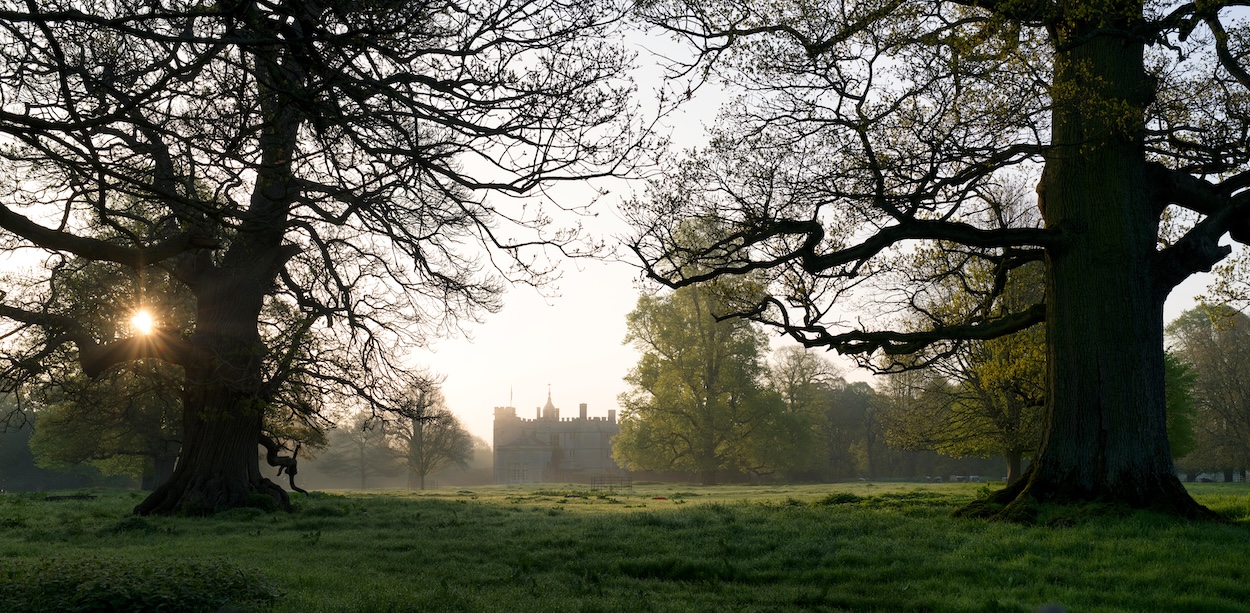‘He leaped the fence, and saw that all nature was a garden’. So goes the famous Horace Walpole quote about William Kent, the 18th-century landscape designer who saw the garden and its surrounding views as single and unified. Were he alive today, Kent might very soon leap over the ha-ha he designed at the Grade I-listed Rousham House in Oxfordshire and tumble head-first into one of Labour’s new eco-town developments. His breeches rumpled, Kent might observe with some sadness that the coherence of his design is no more.
Built in 1635 by Sir Robert Dormer, Rousham continues to be occupied by his descendants Charles and Angela Cottrell-Dormer. Unlike your standard National Trust garden where you will be fleeced from start to finish, the Cottrell-Dormers operate an open-house policy, encouraging visitors to pay in an honesty box, bring a picnic, and ‘enjoy the garden for the day’. As you wind your way around its follies, 12th-century church, dahlia beds and yew hedges glimpsing a longhorn cow, one’s eye is drawn to an English landscape that has not changed for centuries. ‘The poplars have a short life’, head gardener and lifetime Rousham resident Ann Starling tells me matter-of-factly as she points to the horizon where the development is planned. Some 9,000 dwellings may soon dot the ridge.
Blame Gordon Brown who first dreamt up eco-towns, blame the housing shortage or blame the need for headline-grabbing policies as Keir Starmer’s popularity plummets, but the idea of eco-towns appeals in times of housing shortage. Grant Shapps may have slashed their funding by 50 per cent as housing minister, claiming that he ‘would not impose eco-town developments on communities that did not want them’ but, unlike him, they have found their way back to cabinet. Under Labour proposals, 12 new eco-towns are destined for development by 2029, creating 1.5 million new homes that will provide ‘high standards of sustainable living with a focus on affordable housing’.
We seem unable to meet our housebuilding goals (an average of 300,000 a year or 1.5 million in the next five years) or achieve anything like consensus on Nimbyism versus rural conservation. John Watkins, chair of the Gardens Trust, under threat of being stripped as a statutory consultee from government planning processes, explains that ‘landscaped gardens are dynamic, living things’ warning that conservation and preservation are two linked, yet opposing, impulses. How we navigate the two says much about our increasingly fraught relationship with our cultural heritage.
But look closer, and the story becomes far less abstract. Plans to develop Rousham on an ecological ticket are, according to locals, ‘absolute rubbish’ and ‘utterly disastrous’, since they imperil a 12th-century bridge and include the erection of giant wind turbines, thought to be practically unfeasible. Although the developer Dorchester Living states that the eco-town will offer 10 per cent biodiversity net gain, nature corridors, rewilded spaces, public parkland, walking trails and a natural play area, such lofty proposals rarely come off. One need only look at the case of Northstowe in Cambridgeshire, the ‘eerily quiet’ eco-town where only 1,500 homes have been built out of a notional 10,000, making the ambitious site a place of dereliction from which residents are reportedly keen to leave. Current residents of Dorchester Living’s Bicester development complain on a Facebook group that the standard of work is ‘very poor’, with one describing the development as ‘utter shite’.
Plans to develop Rousham on an ecological ticket are, according to locals, ‘absolute rubbish’ and ‘utterly disastrous’
In the case of Rousham, ecological idealism has met other other concerns. The development is proposed for land owned by Oxford University’s New College. A spokesperson for New College stated that ‘the land is managed on a commercial basis in order to support the work of the college as an academic institution’. Quite so, but Oxford University is clearly not hard up. In 2023, the university’s 43 colleges have a combined endowment of £6.4 billion, well over ten times the endowment of all other UK universities. So where does this leave the financial ethics of an academic institution that relies so heavily on the idea of heritage for its own endowment?
For supporters of Rousham, among them Monty Don, Alan Titchmarsh and Sir Niall Ferguson, the answer is clear. There can be no development on Rousham’s countryside that encroaches on its conservation area, established in 1991 to protect its views, no matter who owns it. More than that, Rousham’s fierce supporters claim that Kent’s vision did not stop at its boundaries but instead borrowed from the landscape, making its views coterminous with the house and garden. To desecrate this generosity of vision would be, as landscape writer Adam Nicolson puts it, ‘like housing people in a wing of the national gallery’. ‘Gardens like these don’t stop at their dahlia beds’, he explains plainly, ‘they are in concert with the landscape that surrounds them’.
As I leave Rousham, I think about the optimism of William Kent’s vision and his certainty that we might look upon the same view as he did. And then I think of him emerging from the ha-ha and seeing the eyesore of a modern wind turbine. For his sake, we must object.







Comments